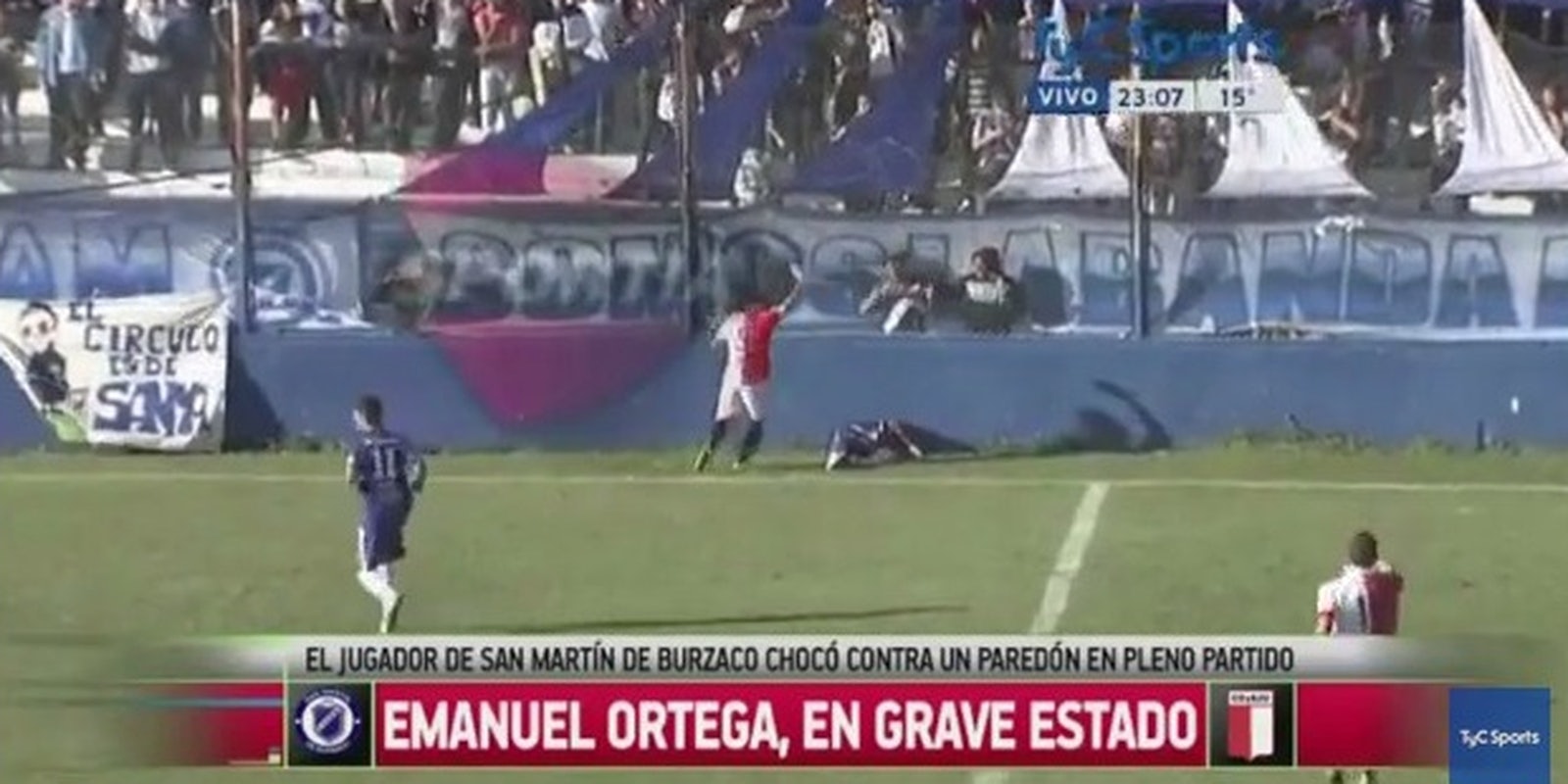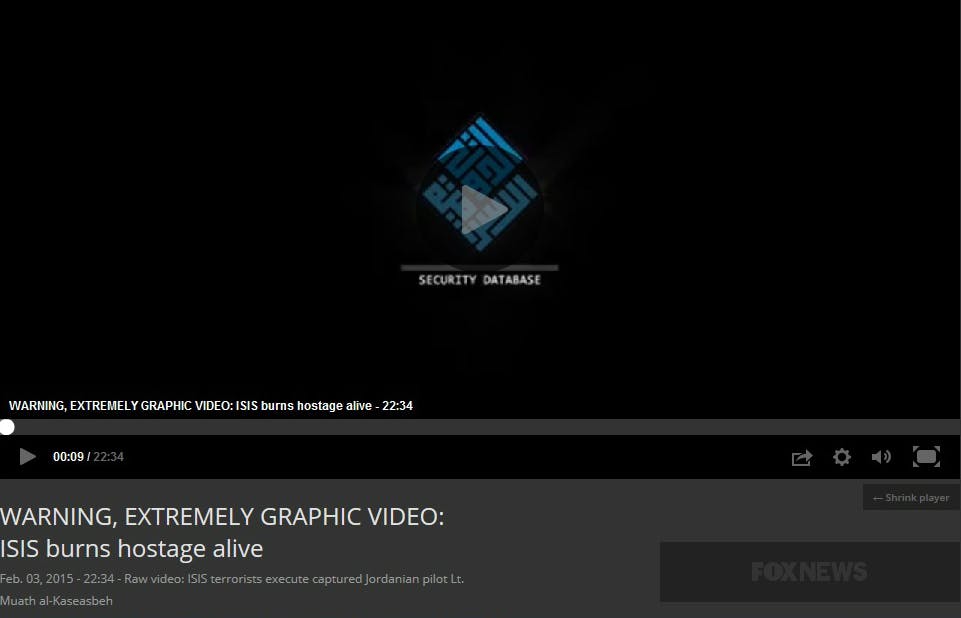When the news of professional Argentine soccer player Emanuel Ortega’s death emerged last week, finding video of the accident that ultimately killed him was not difficult. Ortega, a 21-year-old playing in a fourth-level league, was battling with an opponent for a loose ball, and as the opponent attempted to take it from Ortega, he shoved Ortega away from the ball. Ortega fell headfirst into the brick wall that was situated close to the sideline of the field, and he fractured his skull. After about a week in the hospital, Ortega died.
It was a sad and sickening story, and immediately, reporters and editors around the world had a decision to make. If they were to write about Ortega’s death, would they embed the video that’s readily available on YouTube? Was showing the video newsworthy? Did it serve the public good? Would readers be offended? Was it too sensationalistic?
Judge for yourself.
The discussion at the Daily Dot was brief, namely because it’s one we’ve had on several occasions. If the footage is crucial to news, or the reader’s ability to process it as such, it’s included—with whatever disclaimer seems most appropriate. If it’s too graphic or exploitative, we’ll still cover the news, but we’ll opt instead to only link out to the video in question.
In this case, we decided to show it in the original story. So did Deadspin, and according to Tim Marchman, the website’s editor, the explanation is easy to understand.
“It’s pretty simple. We run newsworthy stuff,” Marchman told the Daily Dot. “That’s our job, putting newsworthy stuff on the Internet.”
The night that reports about Ortega’s death emerged, a Daily Dot survey of nine websites revealed that four showed the video (Epictimes.com, Metro.co.uk, Spanish newspaper El País, and Deadspin), four didn’t (the Independent newspaper in the U.K., Goal.com, Fox Sports Latin America, and Bleacher Report), and one (the Daily Mirror newspaper in the U.K.) showed a different version of the video that didn’t feature Ortega’s head hitting the wall.
The questions that reporters and editors had to ask themselves was whether showing the video was part of the storytelling process—can I really tell this story effectively without showing the video if it’s available?—or whether the sole purpose was to be salacious and try to draw extra pageviews for those who were morbidly curious.
In this case, the footage wasn’t sharp and was taken far from the action. There was no blood, nothing gratuitously violent. It was just one guy shoving another into a wall. If we didn’t already know that the blow eventually caused Ortega’s death, the video would be relatively tame. But we know what happened after the video ends, and that changed the equation. Or did it?
“The broader question is if we should inform readers about events without showing them [the full picture]; I’m really pretty uncomfortable with that,” Marchman said. “The reader should be presumed to have the sense to know if something’s clearly labeled and if it’s something that’s going to upset them. If you’re going to run something along those lines, you should make pretty clear what it is.
“Part of the reason they want to see the video is that these events can be very confusing. You get into a situation where you have the video and can watch it over and over again and still not be clear as to who’s at fault. That’s part of the reason you would publish it so people can make an informed judgment. We err on the side of giving more information, so people will do with it what they will.”
And people will look, because it’s online and because it’s readily available and because it’s titillating. Unlike a major cable news network, which decides for the viewers whether they’ll get to see graphic footage, Internet readers have the ability to make their own determination. Watching television is a passive event. Looking at the Internet and actually clicking the video is an active movement, so a news provider can post the video, step back, and let somebody else make the decision for whether the video gets played and seen.
Take, for instance, Fox News and its handling of the Islamic State burning a Jordanian pilot to death last February. Fox’s Brett Bair made it clear on TV that graphic still photographs of a video were about to shown and to escort children out of the room. On Foxnews.com, the entire 22-minute video from ISIS was shown with this warning.
Still, should Fox have shown such a graphic propaganda video that, as Bair himself said, you can’t unsee after you’ve clicked play? CNN decided not to show the video on its platforms, but Fox Executive Vice President John Moody had a different take, via the Huffington Post.
“After careful consideration, we decided that giving readers of FoxNews.com the option to see for themselves the barbarity of ISIS outweighed legitimate concerns about the graphic nature of the video,” Moody said. “Online users can choose to view or not view this disturbing content.”
That speaks to Marchman’s point about Deadspin’s audience.
“Our editorial process is based on the presumption that people see what they want to see on our site and that there’s an active component to clicking on one of our stories, as long as there’s a warning [about graphic material],” he said. “We want our readership to be self-defining. We don’t want to serve an imagined or an idealized audience. Our audience is the people who read our site. We make certain presumptions on what works for them and what doesn’t work for them. That’s fair for us. I’d have a different calculus if I ran a TV network.”
It’s tough to pin down exactly how reporters and editors should proceed, because every case has so many different considerations. On the same day that Ortega’s death was reported, Deadspin posted video of a matador in Spain taking a vicious goring from a bull (the matador survived). That video, while not absolutely imperative to tell the story, did make the story that was told that much more compelling.
But what about showing the death blow of a Mexican wrestler taking a hit to the head in the ring? Deadspin showed the immediate aftereffects. What about auto racer Tony Stewart running over a fellow race participant and killing him? Deadspin showed it (as did the Daily Dot). What about if video emerged of WWE superstar Owen Hart accidentally falling to his death in Kansas City in 1999? Marchman isn’t sure about that one.
“There’s definitely value in that,” he said. “It’s not a non-story, but it happened a long time ago. Do people need to run that? That’s the value of keeping it on a case-to-case basis.”
In reality, it’s tough to know the answer to the question of how much is too much. It’s tough to know if there’s an answer at all.
“There’s a line,” Marchman said. “It’s hard to say what the line is. In every case, we trust our reporters to exercise common sense and discretion to judge between something that’s genuinely newsworthy and something that’s sensationalistic and doesn’t have any newsworthiness. It’s the same news judgment you would use for anything else.”
Screengrab via TyC Sports/YouTube



